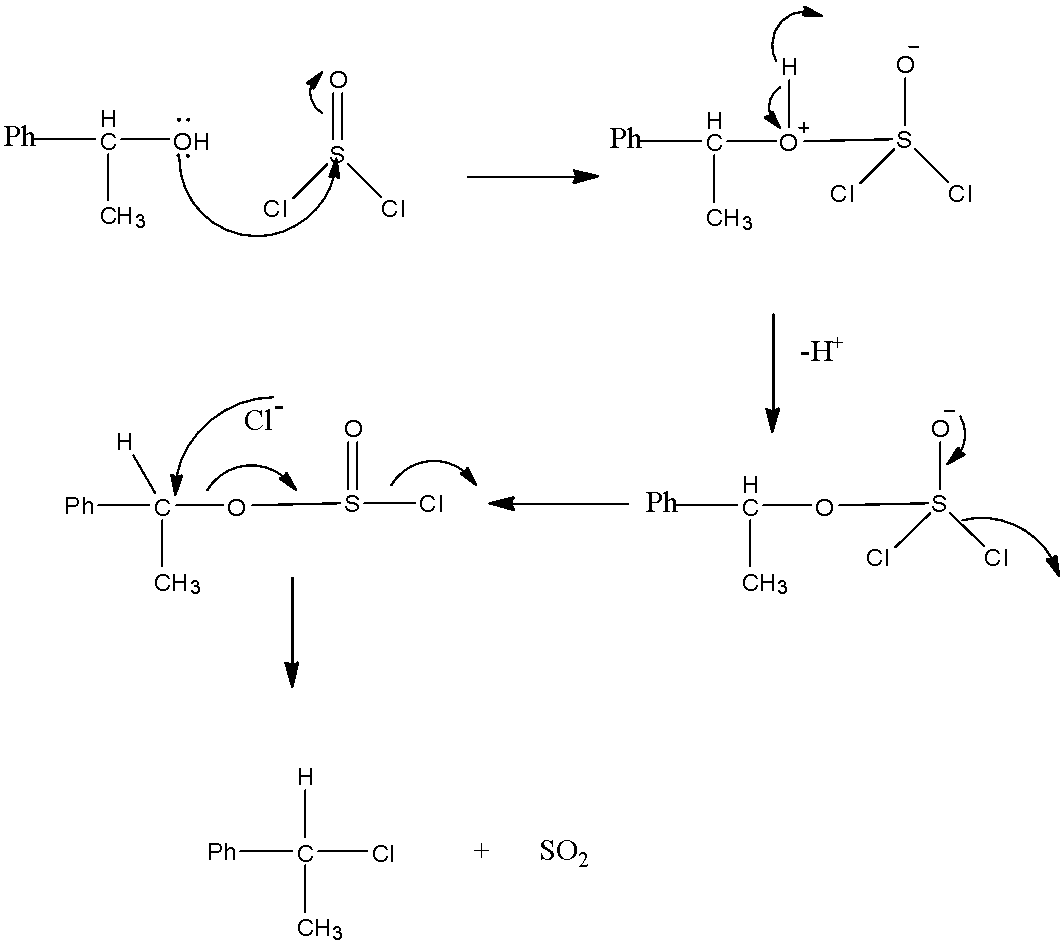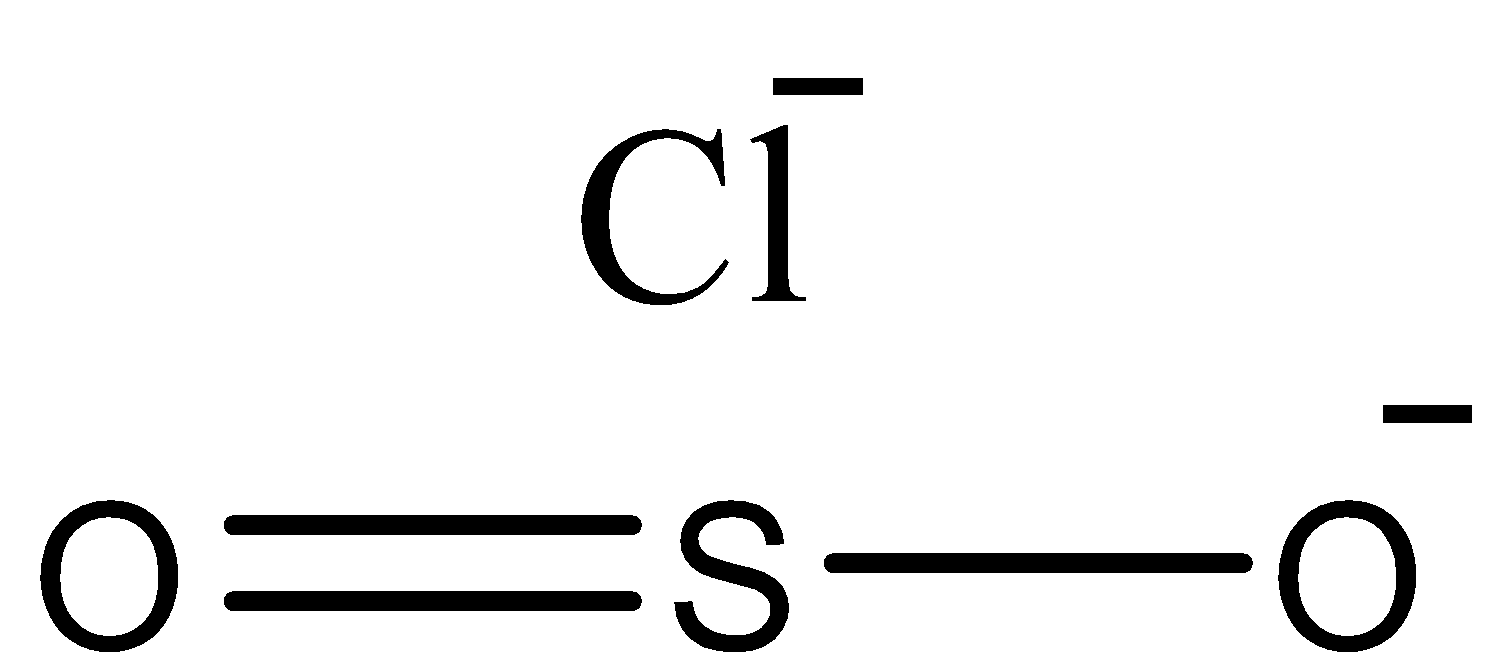Answer
36.9k+ views
Hint: Alcohols react with thionyl chloride and form their chloro derivatives (alkyl or aryl halides) as the products. This reaction is called chlorination. Chlorination is a best example for substitution reactions.
Complete step by step answer:
* In the given reaction aryl halide is reacting with thionyl chloride and forming its halide derivative and Sulphur dioxide and hydrochloric acid as by products.
* In the question it mentioned that we have found the leaving group in the reaction.
* To know about the leaving group we should write the mechanism of the given reaction.
The mechanism of the given reaction is as follows.

* In the first step, a lone pair of electrons on oxygen on alcohol attacks on the electron deficient Sulphur atom.
* Later to stabilize the hydrogen atom of alcohol comes out as a hydrogen ion, in continuation the negative charge on the oxygen attached to Sulphur is getting stabilized by donating electrons to Sulphur in the process chloride ion comes out.
* The liberated chloride ion attacks on the carbon which is attached to Sulphur through oxygen.
* At that time in the process of stabilization Sulphur dioxide was liberated as a by-product.
* In the given reaction the liberated product is Sulphur dioxide.
So, the correct option is C.
Note: All of us think that in the given reaction the hydroxyl group is converting into halogen in the product. So, the liberated product is the hydroxide group (\[O{{H}^{-}}\]). But through mechanism only we can say which group is going to substitute in the reaction.
Complete step by step answer:
* In the given reaction aryl halide is reacting with thionyl chloride and forming its halide derivative and Sulphur dioxide and hydrochloric acid as by products.
\[Ph-CH(OH)C{{H}_{3}}\xrightarrow{SOC{{l}_{2}}}Ph-CH(Cl)C{{H}_{3}}+S{{O}_{2}}+HCl\]
* In the question it mentioned that we have found the leaving group in the reaction.
* To know about the leaving group we should write the mechanism of the given reaction.
The mechanism of the given reaction is as follows.

* In the first step, a lone pair of electrons on oxygen on alcohol attacks on the electron deficient Sulphur atom.
* Later to stabilize the hydrogen atom of alcohol comes out as a hydrogen ion, in continuation the negative charge on the oxygen attached to Sulphur is getting stabilized by donating electrons to Sulphur in the process chloride ion comes out.
* The liberated chloride ion attacks on the carbon which is attached to Sulphur through oxygen.
* At that time in the process of stabilization Sulphur dioxide was liberated as a by-product.
* In the given reaction the liberated product is Sulphur dioxide.
So, the correct option is C.
Note: All of us think that in the given reaction the hydroxyl group is converting into halogen in the product. So, the liberated product is the hydroxide group (\[O{{H}^{-}}\]). But through mechanism only we can say which group is going to substitute in the reaction.
Recently Updated Pages
If a wire of resistance R is stretched to double of class 12 physics JEE_Main

The path difference between two waves for constructive class 11 physics JEE_MAIN

What is the difference between solvation and hydra class 11 chemistry JEE_Main

IfFxdfrac1x2intlimits4xleft 4t22Ft rightdt then F4-class-12-maths-JEE_Main

Sodium chloride is purified by passing hydrogen chloride class 11 chemistry JEE_Main

Consider the following oxyanions PO43P2O62SO42MnO4CrO4S2O52S2O72 class 11 chemistry JEE_Main

Other Pages
An electric bulb has a power of 500W Express it in class 11 physics JEE_Main

The cell in the circuit shown in the figure is ideal class 12 physics JEE_Main

Explain the construction and working of a GeigerMuller class 12 physics JEE_Main

For an electromagnet the core should have A High retentivity class 12 physics JEE_Main

Dissolving 120g of urea molwt60 in 1000g of water gave class 11 chemistry JEE_Main

Normality of 03 M phosphorus acid H3PO3 is A 05 B 06 class 11 chemistry JEE_Main




